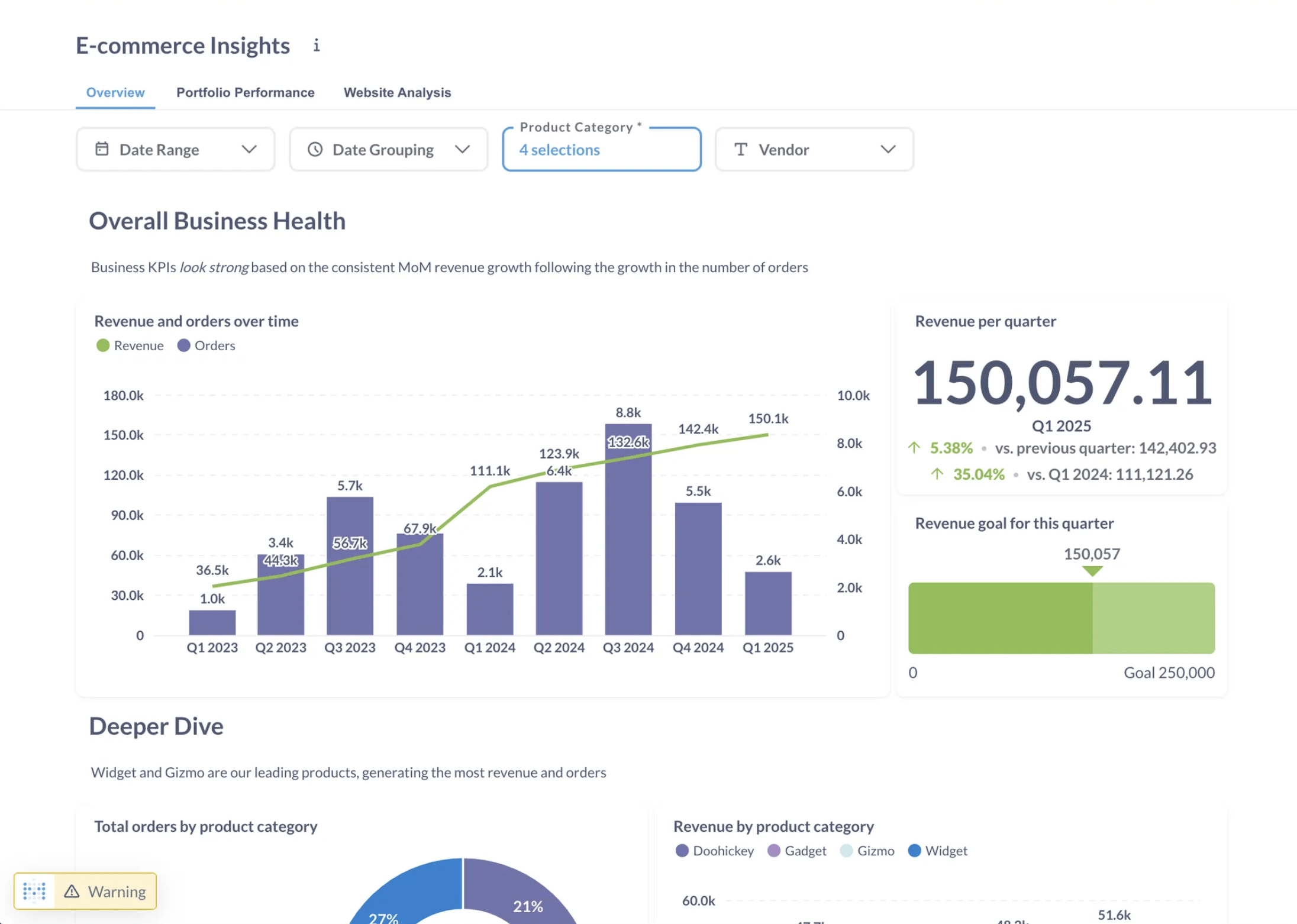Embedded analytics SDK - quickstart
This guide walks you through how to set up the Embedded analytics SDK in your application with your Metabase using API keys.
This setup:
- Is only for evaluation (so you can see how the SDK works).
- Only works on localhost when developing your app (though your Metabase doesn’t need to be running locally).
- Works with both the Enterprise and Open Source editions of Metabase, both self-hosted and on Metabase Cloud.
If you want to use the SDK in production, however, you’ll also need to set up JWT SSO authentication, which requires a Pro or Enterprise plan. To enable JWT SSO when you’re self-hosting Metabase, you’ll need to run the Enterprise Edition Docker image or JAR, and activate your license.
Prerequisites
- Metabase version 52 or higher (OSS or EE). See Installing Metabase.
- Make sure your React version is compatible. (You could also use the sample React app.)
If you don’t have a Metabase up and running, check out the Quickstart CLI.
If you don’t want to use your own application code, check out our quickstart with a sample app.
Overview
To embed a dashboard in your app using the SDK, you’ll need to:
- Enable the SDK in Metabase
- Create an API key in Metabase
- Install the SDK in your app
- Embed SDK components in your app
- View your embedded Metabase dashboard
1. Enable the SDK in Metabase
In Metabase, click on the gear icon in the upper right and navigate to Admin Settings > Embedding > Modular and enable the SDK for React.
2. Create an API key in Metabase
Still in the Admin console, go to Settings > Authentication and click on the API keys tab. Create a new API key.
- Key name: “Embedded analytics SDK” (just to make the key easy to identify).
- Group: select “Admin” (since this is only for local testing).
3. Install the SDK in your app
When installing the npm package, it’s critical to use the npm dist-tag that corresponds to the major version of your Metabase. For example, if your Metabase is version 1.56.x, you’d run 56-stable. See SDK versioning.
Via npm:
npm install @metabase/embedding-sdk-react@53-stable
Via Yarn:
yarn add @metabase/embedding-sdk-react@53-stable
4. Embed SDK components in your app
In your app, import the SDK components, like so:
import {
InteractiveDashboard,
MetabaseProvider,
defineMetabaseAuthConfig,
} from "@metabase/embedding-sdk-react";
/**
* This creates an auth config to pass to the `MetabaseProvider` component.
* You'll need to replace the `metabaseInstanceUrl` and the `apiKey` values.
*/
const authConfig = defineMetabaseAuthConfig({
metabaseInstanceUrl: "https://metabase.example.com",
apiKey: "YOUR_API_KEY",
});
/**
* Now embed your first dashboard. In this case, we're embedding the dashboard with ID 1.
* On new Metabases, ID 1 will be the example dashboard, but feel free to use a different dashboard ID.
*/
export default function App() {
return (
<MetabaseProvider authConfig={authConfig}>
<InteractiveDashboard dashboardId={1} />
</MetabaseProvider>
);
}
5. View your embedded Metabase dashboard
Run your app and visit the page with the embedded dashboard.

Next steps
- Explore theming to change the look and feel.
- Continue by setting up JWT SSO in Metabase and your app to sign people in, manage permissions, and deploy your app in production.
Read docs for other versions of Metabase.


